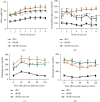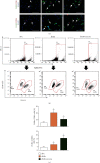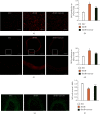Exercise Improves Endothelial Function Associated with Alleviated Inflammation and Oxidative Stress of Perivascular Adipose Tissue in Type 2 Diabetic Mice
- PMID: 33425218
- PMCID: PMC7781720
- DOI: 10.1155/2020/8830537
Exercise Improves Endothelial Function Associated with Alleviated Inflammation and Oxidative Stress of Perivascular Adipose Tissue in Type 2 Diabetic Mice
Abstract
Perivascular adipose tissue (PVAT), a type of adipose tissue that surrounds the blood vessels, has been considered an active component of the blood vessel walls and involved in vascular homeostasis. Recent evidence shows that increased inflammation and oxidative stress in PVAT contribute to endothelial dysfunction in type 2 diabetes (T2D). Exercise is an important nonpharmacological approach for vascular diseases. However, there is limited information regarding whether the beneficial effects of exercise on vascular function is related to the PVAT status. In this study, we investigated whether exercise can decrease oxidative stress and inflammation of PVAT and promote the improvement of endothelial function in a T2D mouse model. Diabetic db/db (5-week old) mice performed treadmill exercise (10 m/min) or keep sedentary for 8 weeks. Body weight, fasting blood glucose levels, glucose, and insulin tolerance were determined. The cytokines (IL-6, IL-10, IFN-γ, and TNF-a) and adiponectin levels, macrophage polarization and adipocyte type in PVAT, oxidative stress, and nitric oxide (NO) expression in the vascular wall were evaluated. The adhesion ability of primary aorta endothelial cells was analyzed. Our data showed that (1) diabetic db/db mice had increased body weight and fasting blood glucose level, compromised glucose tolerance, and insulin sensitivity, which were decreased/improved by exercise intervention. (2) Exercise intervention increased the percentage of multilocular brown adipocytes, promoted M1 to M2 macrophage polarization, associating with an increase of adiponectin and IL-10 levels and decrease of IFN-γ, IL-6, and TNF-a levels in PVAT. (3) Exercise decreased superoxide production in PVAT and the vascular wall of diabetic mice, accompanied with increased NO level. (4) The adhesion ability of aorta endothelial cells to leukocytes was decreased in exercised db/db mice, accompanied by decreased intercellular adhesion molecule 1 (ICAM-1) and vascular cell adhesion molecule 1 (VCAM-1) expressions. Of interesting, coculture with PVAT-culture medium from exercised db/db mice could also reduce ICAM-1 and VCAM-1 expressions in primary endothelial cells. In conclusion, our data suggest that exercise improved endothelial function by attenuating the inflammation and oxidative stress in PVAT.
Copyright © 2020 Jinju Wang et al.
Conflict of interest statement
The authors declare that they have no conflicts of interest.
Figures





References
-
- Wang J., Liu H., Chen S., Zhang W., Chen Y., Yang Y. Moderate exercise has beneficial effects on mouse ischemic stroke by enhancing the functions of circulating endothelial progenitor cell-derived exosomes. Experimental Neurology. 2020;330, article 113325 doi: 10.1016/j.expneurol.2020.113325. - DOI - PMC - PubMed
-
- Pedralli M. L., Marschner R. A., Kollet D. P., et al. Different exercise training modalities produce similar endothelial function improvements in individuals with prehypertension or hypertension: a randomized clinical trial. Scientific Reports. 2020;10(1):p. 7628. doi: 10.1038/s41598-020-64365-x. - DOI - PMC - PubMed
MeSH terms
Substances
Grants and funding
LinkOut - more resources
Full Text Sources
Medical
Molecular Biology Databases
Miscellaneous

